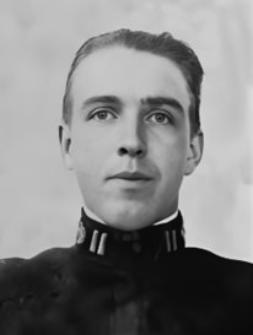
copyright © Wartime Heritage Association
Website hosting courtesy of Register.com - a web.com company
Wartime Heritage
ASSOCIATION
Remembering World War I
Yarmouth Connections
Charles William Richard

Name:
Charles William Richard
Rank:
Boatswain
Service:
Merchant Navy, United States Navy
Date of Birth:
February 27, 1893
Place of Birth:
Wedgeport, Argyle, Yarmouth Co., Nova Scotia
Date of Enlistment:
1917
Age at Enlistment:
24
Height:
5 feet, 9 inches
Complexion:
Fair / Medium
Eye Color:
Blue
Hair Color:
Brown
Date of Death:
March 18, 1925
Age:
32
Cemetery:
St. Raymond’s Cemetery,
Bronx, Bronx Co., New York
Grave:
Section 14, Range 16, Grave 109
Charles William Richard was the son of Jean N. Richard (1855–1936), and Mary Ann Reid (1865-1927),
and the husband of Mary Margaret (Kennedy) Richards (1893-1960), and the father of Evelyn Marie
Richards (1921-2017) and Charles William Richard (1925-1995).
Charles’ siblings were Mary Gertrude Richard (1888-1959), Joseph Vincent Richard (1892-1957), Annie
Frances Richard McMackin (1895-1993), George Edward Richard (1887-1951), Leonard Simon Richard
(1898-1976), Hattie Ella Richard (1905-1991), and Agnes Dionysha Richard (906-1999).
Charles’ son, Charles William Richard-Healy, served in the United States Navy during World War II, from
May 22, 1943, to January 6, 1946. He was born on December 26, 1925, nine months and 8 days after his
father's death in March 1925. He later adopted the surname of his stepfather, Healy.
Charles served in the Merchant Navy and the United States Navy during World War I in the United States,
Canada and at sea. When Charles registered for the US Draft on June 5, 1917, he was serving as
Quartermaster aboard the SS Pequonnock, a cargo steam vessel of the New England Navigation Company.
Serving with the United States Navy, Charles was appointed Boatswain on December 6, 1917.
On September 27, 1918, Charles was transferred to the Naval Auxiliary Reserve in New York, NY.
On October 2, 1918, he was detached from the Reserve in New York and reassigned to the First Naval
District, tasked with duties connected to Canadian Drifters, a fleet of small, armed patrol vessels critical
to anti-submarine operations along the Atlantic coast and built in Canada during WWI, known as CD-class
naval drifters.
October 7, 1918, he was detached from Base Headquarters in Boston, Massachusetts. Charles reported
aboard the Aztec (SP-590), a steam-powered yacht originally built in 1902 and acquired by the Navy in
1917 for wartime service. Aztec was designated flagship of the 1st Naval District and stationed at
Boston, Mass. In this role, the vessel made inspection tours of naval bases within the district. She also
escorted submarines sailing from Boston to New London, Conn., and British troop ships steaming from
Boston to Halifax, Nova Scotia. The Aztec later became HMCS Beaver.
Charles sailed to Shelburne, Nova Scotia aboard the Aztec, where he was ordered to report to the
Section Commander for active duty on Canadian Drifter #41. The CD-class naval drifters, constructed in
Canada, played a vital role in WWI maritime defense.
Charles died in New York City on March 19, 1925, at the age of 32, in the North River near the foot of
Pier 26. At the time, he was serving as a tugboat captain. His shift had begun at 4 p.m. at Pier 39 on the
East River, where he took command of Transfer No. 5. Throughout the day, the vessel made stops at
various commercial locations, with the final scheduled pickup in Hoboken. However, due to heavy
congestion at the dock, the lighter could not be towed. The tug then proceeded to Pier 26. Just before
entering the slip, Charles, stationed in the pilot house, asked a deckhand to take over briefly while he
went below deck. The deckhand successfully piloted the tug into the slip and moored it to a barge. With
the engines shut down, the vessel remained still for several minutes. At approximately 12:40 a.m., the
deckhand heard a splash and saw something fall into the water and quickly disappear beneath the
surface. An alarm was raised, and it was soon discovered that Charles was missing. His body was later
recovered near the spot where the disturbance had been observed.
He was interred at the St. Raymond’s Cemetery in the Bronx, New York.
Sources:
findagrave
military and family records



- World War I - Menu
- WWI Stories and Articles
- Photos - Yarmouth Soldiers
- Selection of World War I Songs
- WWI Casualties of Yarmouth, NS
- Those Who Served - Yarmouth, NS
- WWI Casualties Digby Co. NS
- WWI Casualties Shelburne Co. NS
- Merchant Mariners (1915) Yarmouth, NS
- Canadian Forestry Corps - Non Yarmouth Birth/Residence Enlistments
- US Draft Registry - Yarmouth NS Born


- World War II - Menu
- WWII Stories and Articles
- Telegraphist Air Gunners
- WWII Casualties of Nova Scotia
- US Casualties with NS Connection
- Far East/Pacific Casualties with NS Connection
- Merchant Navy Casualties Nova Scotia
- Nova Scotia WWII Casualties Holten Canadian War Cemetery
- D-Day Casualties - Nova Scotia
- CANLOAN Program Casualties - Nova Scotia
- Battle of the Bulge Casualties - Nova Scotia
- WWII Casualties Yarmouth NS
- Yarmouth Casualties - RCAF RAF Canadian Army WWII
- Yarmouth Co., Marriages WWII
- Casualties Non-Born/Residents with Connection to Yarmouth Co., Nova Scotia.
- WWII Casualties Digby Co., NS
- Non-Nova Scotian WWII Casualties Buried in Nova Scotia
- WWII RCAF Casualties Aged 16-18
- Brothers/Sisters Who Served - World War II













